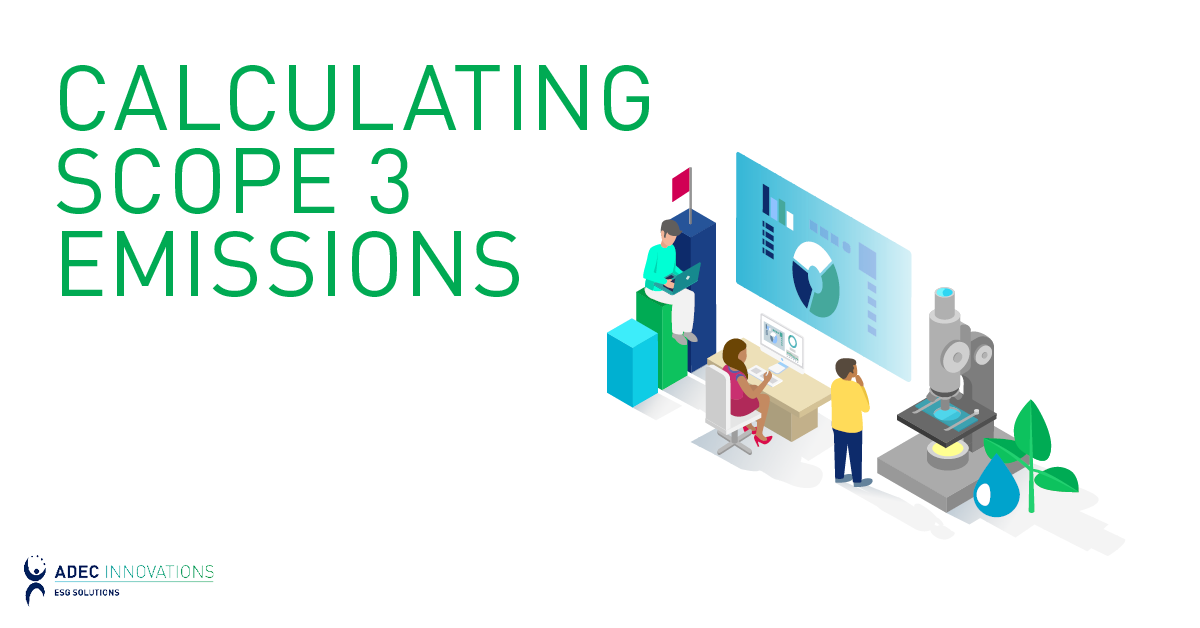Green Highlights of the Year and Ideas for a Sustainable Future
As the year closes and the world waits in gleeful anticipationof the New Year, let’s reflect onthe sustainability successes of the past year and peek at the possible trends of 2014.

By Michele Carchman
December 24, 2013
As the year closes and the world waits in gleeful anticipation of the New Year, let’s reflect on the sustainability successes of the past year and peek at the possible trends of 2014.
The Continuous Combat against Climate Change
This year, we saw the negative impact that climate change can bring to companies and communities. All over the world, businesses, cities and even entire countries were pummeled by storms which led to floods; while others experienced droughts and wildfires. In November, Typhoon Haiyan, the strongest typhoon of this year ravaged the Central Philippines and killed more than 5,000 people. Aside from the dreadful loss of lives, these calamities flattened buildings, disrupted governments and affected countless businesses.These events brought climate change, and consequently, sustainability, as one of the top of the public’s, governments’ and enterprises’ priorities.
According to the United Nations Environment Programme (UNEP), as the rest of the world develops and lighting reaches more homes, the expected spike in electric consumption could lead to a colossal increase in carbon emissions. By 2030, the global electricity demand is expected to increase between 60-70%, and may “lead to disastrous effects on efforts to fight climate change globally”. A quick and easy answer is to replace old lighting with more efficient lights that use environmentally sustainable technology. Fifteen countries of the Economic Community of Western African States (ECOWAS) agreed to stop using incandescent lamps in favor of more efficient lighting installations. Under UNEP’s watch, the West African states look to complete the transition of their lighting units and possibly save 2.4 terawatt hours annually. The saved energy is enough to power at least 1.2 million households and, collectively, will save the ECOWAS members $220 million annually.
 In some areas of Peru, families live in clay houses with no access to electricity and gas. The United Nations Development Programme (UNDP) collaborated with the Peruvian Government to introduce improved stoves producing the same heat, while using 50% less wood. UNDP reports that in the early part of 2013, 88,000 stoves have been distributed in six provinces, benefiting 53,000 people. Because less wood is being burned, the country has reduced its annual carbon emissions by 105,000 tons as of early 2013. Its government plans to eventually trade the reduction in international carbon markets and use the proceeds as development fund.
In some areas of Peru, families live in clay houses with no access to electricity and gas. The United Nations Development Programme (UNDP) collaborated with the Peruvian Government to introduce improved stoves producing the same heat, while using 50% less wood. UNDP reports that in the early part of 2013, 88,000 stoves have been distributed in six provinces, benefiting 53,000 people. Because less wood is being burned, the country has reduced its annual carbon emissions by 105,000 tons as of early 2013. Its government plans to eventually trade the reduction in international carbon markets and use the proceeds as development fund.
Looking ahead, the battle against climate change is intensifying in developing nations. Addressing climate change issues and mitigating its effects are now seen as key components of reducing poverty. Developing countries are now seen as prime providers of carbon credits, and more importantly, as the beneficiaries of global carbon trading. As developing nations actively provide carbon credits, they help developed nations offset their emissions; developing countries are presented with opportunities to generate revenue and pursue sustainable development in exchange. For example, by reducing Peru’s dependence on firewood through the use of innovative cook stoves, it has reduced their carbon footprint (and earned extra carbon credits). The country can then sell its surplus carbon credit; the earnings from selling carbon credits can in turn be used to fund livelihood projects such as the establishment of more sustainable climate-resilient coffee farms around the country. This is an example of how sustainability works for everyone in society: developed nations reduce their environmental impact as the livelihood and future of developing countries are secured.
Environmental Sustainability Efforts from Businesses
Aside from sustainability efforts from the UN and  governments, private companies have also initiated efforts to minimize the impacts that their operations have on the environment. By increasing the recycling rate of its corrugated containers, a national retailer was able to recycle more than 190,000 tons of the material. This propelled the company to achieve its sustainability goals for the year.
governments, private companies have also initiated efforts to minimize the impacts that their operations have on the environment. By increasing the recycling rate of its corrugated containers, a national retailer was able to recycle more than 190,000 tons of the material. This propelled the company to achieve its sustainability goals for the year.
Since 2012, a banking group was able to protect 487 hectares of critical North American forests as part of its sustainability efforts. It has committed to guard the equivalent of more than two football fields of forest habitat per day over the next five years. A study shows that one hectare of existing forest can seize 65 tons of carbon emissions per year; this means that the bank’s efforts sequestered 31,655 tons of carbon emissions since the start of its program. Also, in 2012, 29% of the reporting suppliers to CDP’s Supply Chain program saved approximately $13.7 billion after implementing more sustainable business practices.
The Rise of Smart Cities
As for next year, Frost & Sullivan (F&S) predicts the emergence of smart cities, wider use of unconventional gas and opportunities from increased environmental awareness and legislation to be key topics. These predictions are based on F&S’ 2013 survey involving 1835 executives from 40 countries.
Urban populations are seen to have higher income while the growing middle class will consume more goods and resources, leading to more waste and pollution. The projected increase in pollution will make people more aware and drive for cleaner, more efficient energy. In some ways, this is already happening now with the smog issues in China which has blanketed parts of the country, caused cancelled school days, closed down airports and suspended bus routes. The recent attempt of its government to put a positive spin on this man-made issue has brought more attention from the global audience. This pushed China into changing its ways. Its government announced that local leaders will now be assessed, not on the economic growth of their locales, but how they impact the environment. Other governments can learn from China’s peril and lead a different, more sustainable path.
 As China aims to restructure its cities, it shows that governments play a pivotal role in improving the sustainability performance of the districts, cities, and countries they lead. It is through their decisions and leadership that sustainability is facilitated and perpetuated by means of laws they promulgate, and plans they formulate. To reduce emissions from commuting and transportation, China aims to establish smart cities and increase the number of sustainable businesses in provinces. By doing so, residents from provinces will no longer need to commute or move to key (and highly-polluted) cities such as Beijing. This reduces carbon emission levels, along with securing stable employment for more people in China.
As China aims to restructure its cities, it shows that governments play a pivotal role in improving the sustainability performance of the districts, cities, and countries they lead. It is through their decisions and leadership that sustainability is facilitated and perpetuated by means of laws they promulgate, and plans they formulate. To reduce emissions from commuting and transportation, China aims to establish smart cities and increase the number of sustainable businesses in provinces. By doing so, residents from provinces will no longer need to commute or move to key (and highly-polluted) cities such as Beijing. This reduces carbon emission levels, along with securing stable employment for more people in China.
Keeping Up with Changing Consumer Perceptions on Sustainability
Despite countless environmental challenges, 2013 saw a lot of vital changes not just in businesses and industries, but more importantly, in consumers. In September, a survey conducted by Research Data + Insights showed that consumers are now more concerned with firms’ sustainability initiatives. According to the study, the vast majority (86%) of the respondents expect food and beverage brands to “actively help” in the recycling efforts of their packaging. In fact, 45% say that their patronage of these brands can be discontinued depending on its environmental initiatives. The change in the public’s perception of sustainable practices is where it matters the most. Consumers can decide not to support brands, and even multi-national companies, whose operations they deem harmful to the environment.
Enterprises, at the end of the day, provide services and products. Businesses dealing with electronics, cars, manufacturing, food, beverage or even services all rely on clients for profitability. If clients and consumers demand greater sustainability initiatives from these businesses, firms have no choice but to comply or lose their valuable customers. The key to a more sustainable world is a public that is more aware and concerned.
Sustainability at Home
For those who want to contribute personally to the drive for sustainability, the United States Environmental Protection Agency (EPA) presented simple acts that can be done at home. Changing the lights in homes to Energy Star accredited fixtures will save households 75% off of the energy other lights use while producing 75% less heat. These more efficient lights can reduce greenhouse gas emissions by 130,000 pounds and save $11,000 on power bills. Replacing old heating and cooling equipment with Energy Star certified appliances can cut an annual energy bill by $200. By creating compost pits in yard, the amount of garbage in landfills and carbon emissions cane be reduced. For a better understanding of a household’s carbon footprint, the EPA has the Household Carbon Footprint Calculator. Lastly, everyone can tell family and friends how having a more efficient home and lifestyle can benefit the environment and the pocket.
And, for this holiday season, if you aren’t using LED lights, find the after Christmas sales and pick some up. In 2014, you’ll be festive and energy conscious at the same time. Enjoy the last few days of 2013, and we look forward to sharing our thoughts and insights with you in 2014. Look for our next blog post in January.
Businesses can rely on FirstCarbon Solutions (FCS) to help them achieve sustainable operations or improve existing sustainability efforts. With the tools and expertise to help enterprises assess its operations and transform into leaner companies, FCS has the proven capabilities to provide the services custom-fit for you. Through ghgTrack, companies can easily setup and track resource utilization. Through Carbon Footprinting, a business can have precise and granular data whenever they need it. With LCA, a business can assess its entire operation’s impact on water, waste and other natural resources. 2013 was able to start a lot of companies’ roads towards sustainability – with FCS, any business can achieve this, too.
Related Articles
Environmental Sustainability, Environmental Impacts, Carbon Management, Environmental Issues
By Tyanna Bui on November 2, 2021
Carbon Management | GHG Emissions
By Adrienne Garcia on March 10, 2020
Environmental Impacts | Sustainability | Forests | Organization
By Kevin Bolland on December 23, 2019
Environmental Impacts | Environmental Assessments | CEQA | Environmental Planning | city planning
Be a sustainability leader.
Our team supports you no matter where you are on your Sustainability Journey. Talk to us today to learn more.






